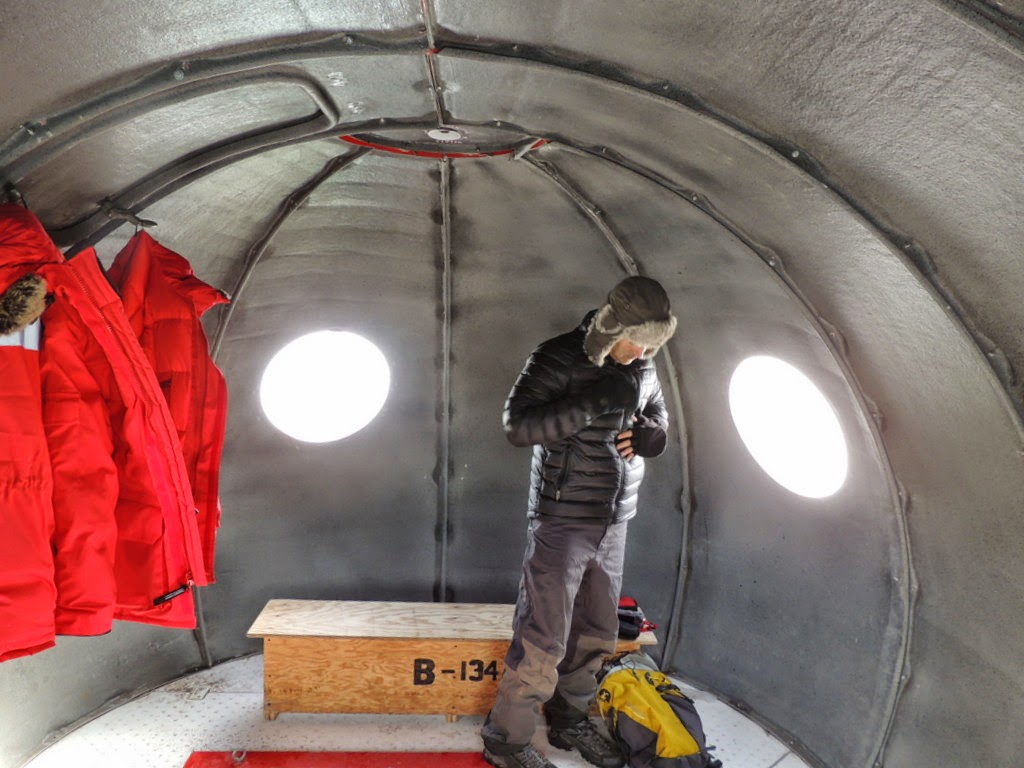The "Ob Tube" (observation tube) is a 4-5m (12-15ft) tube with viewing windows at the bottom that has been put through the sea ice, just offshore of McMurdo Station. The tube is wide enough for someone to climb down into the viewing chamber and have a look at life in the sea under the ice. With most of the snow cleared off the sea ice surrounding the tube, a fair amount of light can filter down into the water to enable viewing.
Weather was poor for flying the other day so we were unable to visit any AWS stations, but an afternoon trip to the Ob Tube was a great use of time.
 |
| The top of the Ob Tube is the green cylinder and a "Tomato Hut" is on the right. I was standing on sea ice when taking this picture. |
 |
| Inside the Tomato Hut. These huts are often used as emergency shelters or warming huts at many locations in Antarctica |
 |
| I'm about to go down the tube. It's a tight fit! There are steel rungs on the inside of the tube and finally a rope ladder at the end. |
 |
| A picture of the sea floor from the viewing window. Can you see the starfish? |
An interesting feature seen from the underside of the sea ice is a "brinicle" - at the top-right side of the above picture there is a (faint) yellow-ish
finger of ice. Brine is a mix of salt and water. The more salt contained in water, the lower the freezing point, so if very salty, but very cold
water is able to flow into the sea water in a concentrated form, it will freeze the
less salty seawater that it comes into contact with, forming a tube. If very saline brine continues to flow, the brinicle will grow downwards. During the formation of sea ice, salts are rejected from the freezing sea water and brine is formed.
 |
| The underside of the sea ice - algae and ice crystals |
Despite being very cold water, the sea is teeming with life. I could see many small invertebrates and several varieties of small fish. Occasionally you could hear seal calls through the water, though I didn't see any seals.
 |
| There are lots of small fish swimming around. The sea is rich in life down here. |







